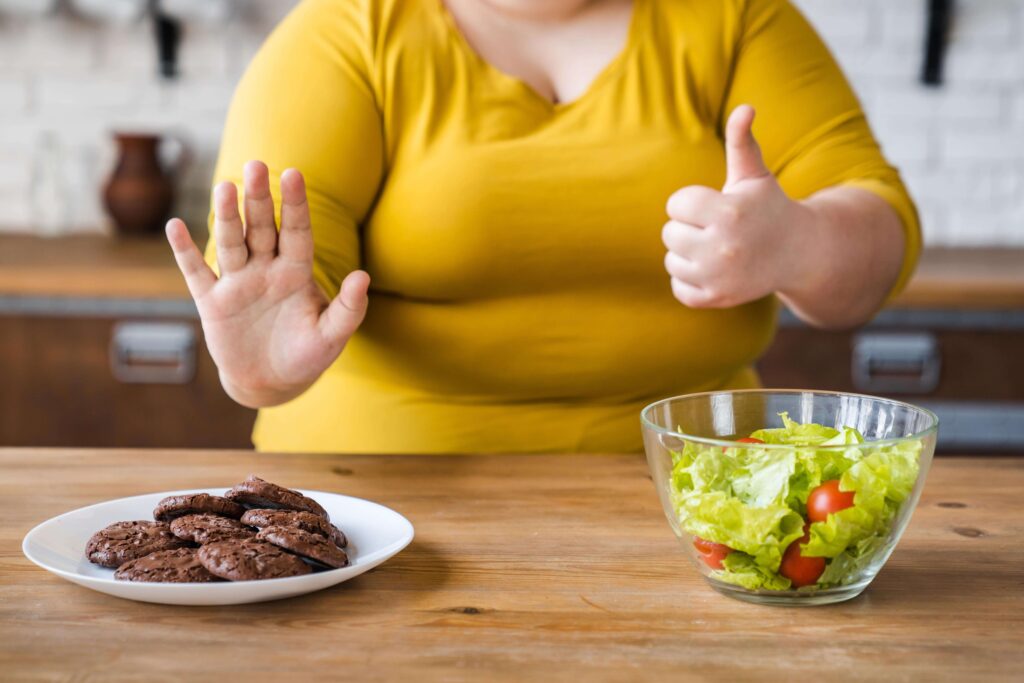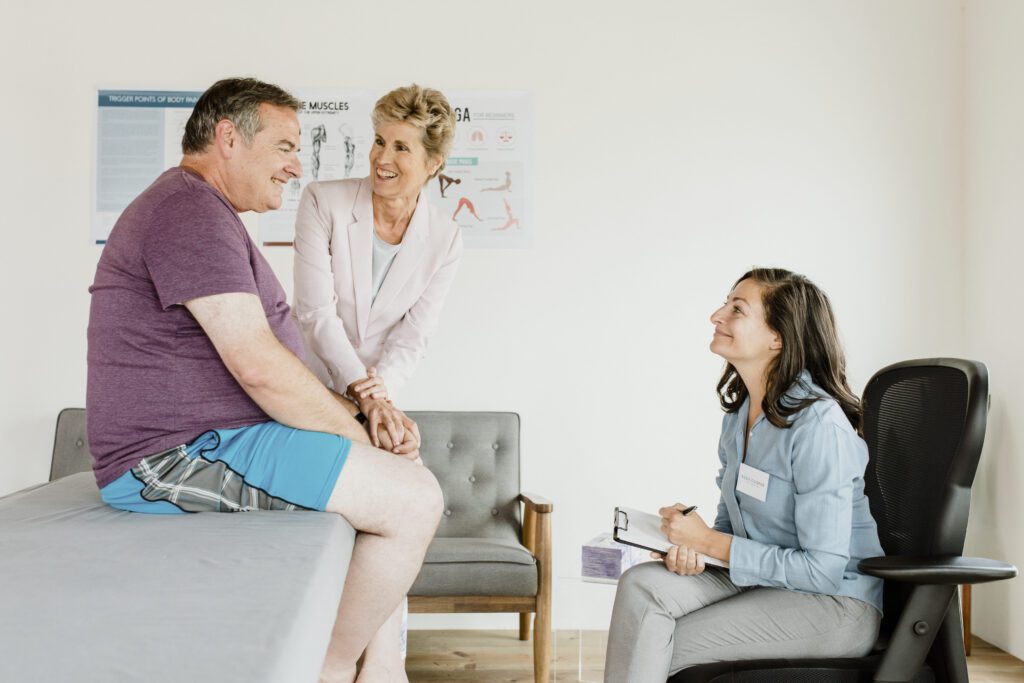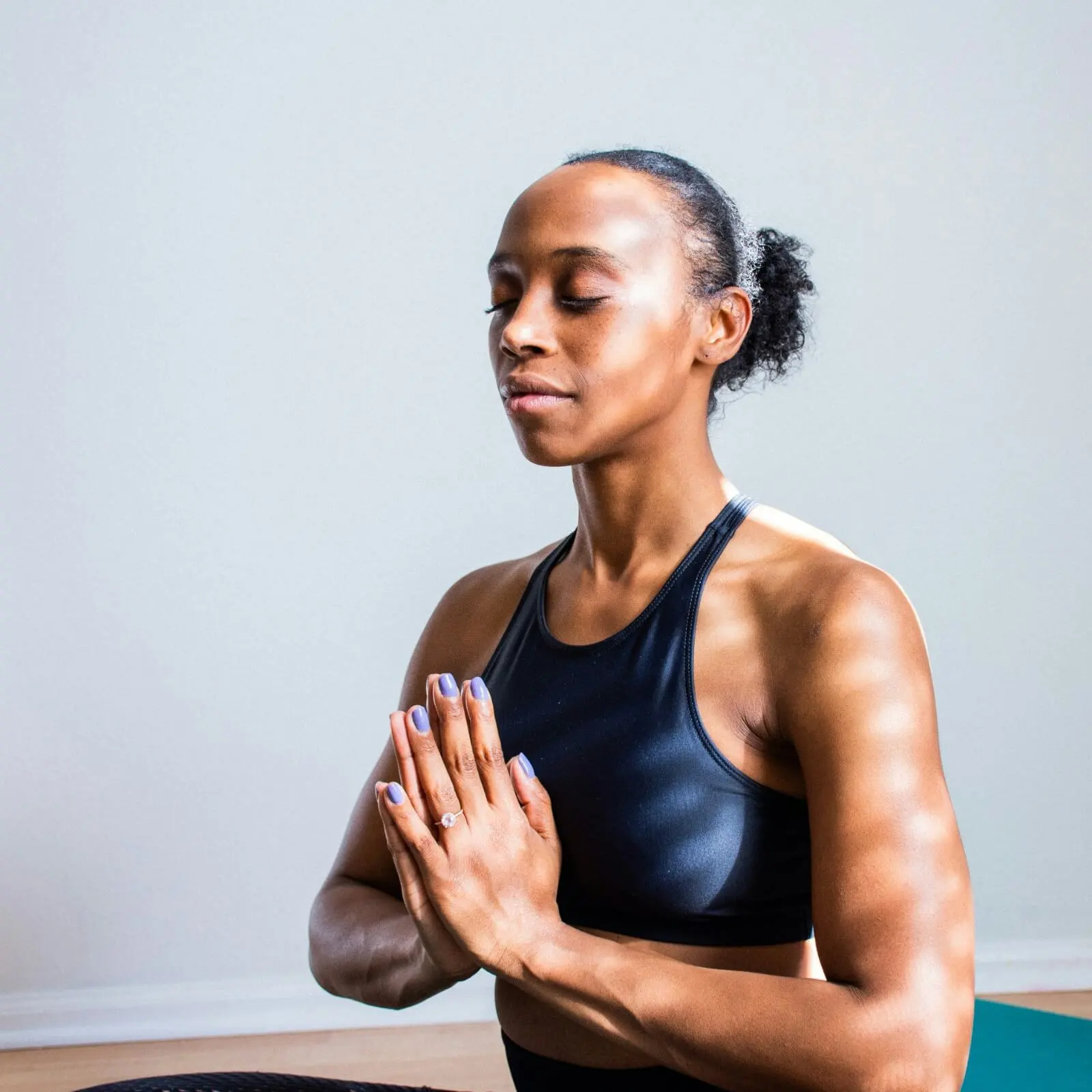If you are using GLP-1 medications for weight loss, you might have questions about semaglutide and tirzepatide, how these medications work and about what to expect. Many people also ask, “Is Tirzepatide the same as Semaglutide?” While they share similarities, they are not identical. This guide will walk you through everything from administration and benefits to potential side effects and long-term weight loss strategies.
Chapter 1: Administering Semaglutide and Tirzepatide with Confidence
Now that you have your Semaglutide or Tirzepatide, you might be wondering how to administer it. Don’t worry, we have a step-by-step guide just for you. It’s easier than you might think!
Choose your spot: First, you’ll want to pick a fatty area on your body, such as your abdomen, thigh, or upper arm. This spot should change with each injection to avoid irritation and ensure even distribution.
Clean it up: Before injecting, make sure to clean the area with an alcoholswab. Good hygiene is essential.
Get your pen ready: Remove the cap from your Semaglutide or Tirzepatide pen and attach a new needle. A sharp needle is crucial for a comfortable experience.
Dial it up: Set the dosage on your pen. For a quick refresher on dosage amounts, visit a helpful video tutorial or consult your healthcare provider.
Time for the poke: Pinch the fatty area you’ve chosen, insert the needle at a 90-degree angle, and press the plunger. You’ve just administered Semaglutide or Tirzepatide with confidence!

Chapter 2: The Benefits – Embrace the Positive Changes
Semaglutide and Tirzepatide are more than just weight loss aids – they have other health benefits too! Here’s what to expect when you start your journey:
Weight loss: The primary goal! Semaglutide and Tirzepatide help you lose weight by suppressing your appetite and slowing down gastric emptying. Say goodbye to constant cravings.
Improved blood sugar control: If you have type 2 diabetes, both medications can help improve your blood sugar levels.
Better heart health: Research shows that Semaglutide and Tirzepatide may reduce the risk of heart-related issues. Your heart will appreciate the support!
Chapter 3: Side Effects – Being Prepared
While Semaglutide and Tirzepatide are helpful for weight loss, they can sometimes cause side effects. We’re here to guide you through this part of the journey:
Nausea: Semaglutide and Tirzepatide can cause nausea, but it usually subsides over time.
Diarrhea: This side effect can be inconvenient, but it’s essential to stay hydrated and take it easy if it occurs.
Constipation: On the other hand, you might experience constipation. Be patient and consider adjusting your diet if necessary.
Injection site reactions: Some mild redness or swelling at the injection site is normal. If it persists or worsens, contact your healthcare provider.
Chapter 4: Setting Your Expectations – Embracing Realistic Goals
Now that you know all about Semaglutide and Tirzepatide, it’s time to set realistic expectations. Here’s what you should keep in mind while embarking on your weight loss journey:
- Patience is key: Achieving your ideal body takes time. Semaglutide and Tirzepatide are not magic solutions, so allow them to work their magic gradually.
- A healthy lifestyle matters: Semaglutide and Tirzepatide are helpful allies, but they’re not a substitute for a balanced diet and regular exercise. Embrace a healthy lifestyle to achieve the best results.
- Individual results may vary: Everyone is different, so don’t compare your progress to others. Focus on your journey, and remember, consistency and perseverance pay off.
- Consult your doctor: If you have any concerns or experience severe side effects, reach out to your healthcare professional. They’re there to help you succeed!
For some real-life stories and inspiration, check out videos featuring people who’ve had success with Semaglutide and Tirzepatide or join online communities where users share their experiences.

Chapter 5: Understanding the Science – Semaglutide and Tirzepatide’s Mechanisms of Action
Both Semaglutide and Tirzepatide help you lose weight by suppressing your appetite and slowing down gastric emptying. Let’s take a closer look at how they work:
GLP-1 receptor agonist: Semaglutide and Tirzepatide are glucagon-like peptide-1 (GLP-1) receptor agonists. They mimic the action of GLP-1, a hormone that’s naturally produced in your body after a meal.
Appetite suppression: By binding to GLP-1 receptors in your brain, both medications help you feel fuller and less hungry.
Gastric emptying: Semaglutide and Tirzepatide slow down the rate at which food moves through your stomach, so you feel satisfied for longer.
Chapter 6: Diet and Exercise – Building Healthy Habits
Pairing Semaglutide or Tirzepatide with a healthy lifestyle is essential. Here are some tips to help you achieve your goals:
Eat a balanced diet: Focus on whole foods, such as fruits, vegetables, lean proteins, and whole grains. Remember, a varied diet is key to successful weight loss.
Watch your portions: Be mindful of portion sizes to avoid overeating. Semaglutide and Tirzepatide will help with appetite control, but it’s still important to pay attention to what’s on your plate.
Stay hydrated: Drinking plenty of water is crucial for overall health and weight loss. It also helps curb hunger pangs.
Get moving: Aim for at least 150 minutes of moderate-intensity aerobic exercise or 75 minutes of vigorous-intensity aerobic exercise per week. Don’t forget to incorporate strength training as well!

Chapter 7: Frequently Asked Questions (FAQs)
Here are some common questions people have about Semaglutide and Tirzepatide:
Can I take Semaglutide or Tirzepatide if I’m pregnant or breastfeeding?
Consult your doctor before using Semaglutide or Tirzepatide if you’re pregnant, planning to become pregnant, or breastfeeding.
How long should I use Semaglutide or Tirzepatide for weight loss?
The duration of your treatment will depend on your individual progress and your doctor’s recommendations.
Can I drink alcohol while using Semaglutide or Tirzepatide?
It’s best to limit alcohol intake while using Semaglutide or Tirzepatide, as excessive alcohol consumption may increase the risk of low blood sugar or pancreatitis.
Chapter 8: Storing and Handling Your Semaglutide or Tirzepatide Pen
Proper storage and handling of your Semaglutide or Tirzepatide pen are essential to ensure its effectiveness. Here are some tips:
Store it right: Keep your Semaglutide or Tirzepatide pen in the refrigerator (36°F to 46°F / 2°C to 8°C) until you’re ready to use it. Once in use, store it at room temperature (up to 86°F / 30°C) for up to 56 days.
Keep it clean: Always use a new needle for each injection and replace the pen cap after each use to prevent contamination.
Dispose responsibly: Dispose of used needles in a sharps container, following local guidelines and regulations.
Chapter 9: Dealing with Missed Doses and Overdoses of Semaglutide and Tirzepatide
Life happens, and sometimes you might miss a dose or accidentally take too much Semaglutide or Tirzepatide. Here’s what to do in such situations:
Missed dose: If you’ve missed a dose of Semaglutide or Tirzepatide, take it as soon as you remember, provided it’s not close to the time of your next scheduled dose. If it’s almost time for your next dose, skip the missed dose and continue with your regular schedule. Don’t take a double dose to make up for the missed one.
Overdose: If you suspect you’ve taken too much Semaglutide or Tirzepatide, contact your healthcare provider or seek immediate medical attention. Symptoms of an overdose may include severe nausea, vomiting, or low blood sugar.
Chapter 10: Staying Motivated and Tracking Progress on Semaglutide or Tirzepatide
Maintaining motivation and tracking your progress are crucial components of a successful weight loss journey, whether you’re using Semaglutide or Tirzepatide. Here are some tips to keep you going:
Maintaining motivation and tracking your progress are crucial components of a successful weight loss journey, whether you’re using Semaglutide or Tirzepatide.
Chapter 11: Testimonials and Case Studies for Semaglutide and Tirzepatide
Hearing about the success of others can be inspiring and motivating. Check out these testimonials and case studies of people who have used Semaglutide or Tirzepatide for weight loss:
Hearing about the success of others can be inspiring and motivating. Check out these testimonials and case studies of people who have used Semaglutide or Tirzepatide for weight loss:
- Zappy gets it done!
- I started semaglutide through Zappy Health a few weeks ago and have been so thankful to be part of their community. They’ve been fast, efficient and very helpful. I got my medication within a few business days! I ordered on Friday after doing my initial consultation and my package arrived by Wednesday! I was so excited and the package came with plenty of supplies and ice packs to keep the medication cold like it needed to be. After the first injection I was feeling a little nauseous so I contacted the staff through the app and they got back to me right away asking what pharmacy to send some medication to. I got it within a few hours! That’s even faster than medications I get sent in from my primary care provider! I also like the 3 month promotion they had when I joined because the cost was a great deal! So glad I went through Zappy Health and even though I’m only on week 2, I feel excited and confident that even through a telehealth platform, there is support and staff and providers that are always reachable.
- Such an amazing experience
- Such an amazing experience! Was able to consult with physician right away and they answered all my questions. So happy with the fast shipping and prompt response when I had questions. I’m really excited about my weight loss journey with such a dedicated company to helping me be a better me!
- Real weight loss with support and resources
- I was hesitant to use a virtual provider at first, but not only do I get all of my questions answered but I also felt reassured. I have seen leaps and bounds success in my weight loss so far, with having support from them all the way. So much so my husband who is active duty military and has sustained many injuries has signed up as well.
Chapter 12: Managing Potential Drug Interactions with Semaglutide or Tirzepatide
Semaglutide and Tirzepatide may interact with certain medications, so it’s important to be aware of potential drug interactions. Always inform your healthcare provider of all the medications you’re taking, including prescription, over-the-counter, and herbal supplements. Some common drug interactions with Semaglutide and Tirzepatide include:
- Insulin: GLP-1 medications may increase the risk of low blood sugar when taken with insulin or other diabetes medications. Your doctor may need to adjust your medication doses to avoid this interaction.
- Oral contraceptives: GLP-1 medications may slow down the absorption of oral contraceptives, potentially reducing their effectiveness.
- Warfarin and other blood thinners: These medications may increase the risk of bleeding when taken with blood-thinning medications.
Chapter 13: A Trip Down Memory Lane – The History of Semaglutide and Tirzepatide
Semaglutide and Tirzepatide have become popular weight loss medications, but they have interesting backstories. Let’s take a trip down memory lane and explore the origins and development of these wonder drugs:
- The discovery of GLP-1: The story of Semaglutide began with the discovery of glucagon-like peptide-1 (GLP-1) in the 1980s. Researchers found that this hormone played a crucial role in regulating blood sugar and appetite.
- Development of GLP-1 analogs: The short half-life of natural GLP-1 made it unsuitable for therapeutic use. In the 1990s, scientists began developing GLP-1 receptor agonists (analogs) with a longer half-life, leading to the introduction of drugs like exenatide and liraglutide.
- Birth of Semaglutide: Building on the success of earlier GLP-1 receptor agonists, Semaglutide was developed by Novo Nordisk. In 2017, it was approved for the treatment of type 2 diabetes under the brand name Ozempic.
- Semaglutide and weight loss: Researchers soon discovered that Semaglutide’s appetite-suppressing effects could also aid in weight loss. In 2021, the FDA approved a higher-dose formulation of Semaglutide (brand name Wegovy) specifically for weight management.
- Tirzepatide: Tirzepatide, a dual glucose-dependent insulinotropic polypeptide (GIP) and GLP-1 receptor agonist, was developed by Eli Lilly and Company. Its unique mechanism of action offers additional benefits in glucose control and weight management for patients with type 2 diabetes and those seeking weight loss treatment.
Chapter 14: Debunking Myths – Common Misconceptions About Semaglutide, Tirzepatide, and Weight Loss
When it comes to weight loss medications like Semaglutide and Tirzepatide, misconceptions abound. Let’s debunk some of the most common myths:
Myth: Semaglutide and Tirzepatide are magic weight loss pills.
Fact: While both medications are effective in helping people lose weight, they are not magic solutions. Healthy lifestyle changes, such as a balanced diet and regular exercise, are crucial for achieving long-term weight loss success.
Myth: Semaglutide and Tirzepatide work the same way for everyone.
Fact: Individual responses to Semaglutide and Tirzepatide may vary. Factors such as genetics, lifestyle, and adherence to the medication regimen can impact weight loss outcomes.
Myth: Semaglutide and Tirzepatide cause rapid, extreme weight loss.
Fact: Both medications promote gradual, steady weight loss. Losing weight too quickly can be harmful to your health, so it’s important to set realistic expectations.
Chapter 15: Weighing Your Options – Alternative Weight Loss Medications
While Semaglutide and Tirzepatide are popular and effective weight loss medications, there are other options to consider. Let’s explore some alternative weight loss medications and how they compare to Semaglutide and Tirzepatide:
- Orlistat: Orlistat (brand names Xenical and Alli) works by blocking the absorption of dietary fat in your intestines. Unlike Semaglutide, it doesn’t affect your appetite. Orlistat can cause gastrointestinal side effects and may require a low-fat diet for optimal results.
- Phentermine-topiramate: This combination medication (brand name Qsymia) works by suppressing appetite and increasing feelings of fullness. It’s generally prescribed for short-term use and may have more potential side effects than Semaglutide, including increased heart rate and birth defects if taken during pregnancy.
- Liraglutide: Liraglutide (brand name Saxenda) is another GLP-1 receptor agonist, similar to Semaglutide. It’s also used for weight management but requires daily injections, while Semaglutide is administered once a week.
- Naltrexone-bupropion: This combination medication (brand name Contrave) works by targeting the brain’s reward and appetite centers, helping to reduce hunger and cravings. It’s usually prescribed for long-term use but may have more potential side effects than Semaglutide, including increased blood pressure and heart rate.

Chapter 16: Managing Stress and Emotional Eating while Using Semaglutide or Tirzepatide
Stress and emotional eating can be significant obstacles on your weight loss journey, whether you’re using Semaglutide or Tirzepatide. Here are some tips for managing these challenges:
- Identify triggers: Recognize situations or emotions that lead to stress eating and develop strategies to cope with them in healthier ways.
- Practice mindfulness: Mindful eating techniques, such as savoring each bite and eating without distractions, can help you become more aware of your hunger and fullness cues.
- Seek support: Connect with friends, family, or a therapist to discuss your emotions and stressors. Building a strong support network can be invaluable in managing stress and emotional eating.
- Engage in self-care: Make time for relaxation and activities you enjoy. Regular exercise, meditation, and adequate sleep can also help reduce stress and improve your overall well-being.
Chapter 17: Meal Planning and Recipe Ideas
A healthy diet is crucial for weight loss success while using Semaglutide. Here are some meal planning and recipe ideas to help you stay on track:
- Plan your meals: Create a weekly meal plan and grocery list to ensure you have healthy ingredients on hand. This will help you avoid last-minute, less nutritious choices.
- Prep ahead: Prepare meals and snacks in advance to save time and make healthy eating more convenient.
- Try new recipes: Explore new healthy recipes to keep your meals exciting and varied. There are countless resources online, such as [Healthy Recipe Website Link], which offer a wide range of nutritious and delicious meal ideas.
- Make healthy swaps: Replace high-calorie, processed foods with whole, nutrient-dense alternatives. For example, swap white rice for brown rice or quinoa, or choose whole-grain bread over white bread.
Chapter 18: Exercise Routines and Recommendations
Regular exercise is essential for weight loss and overall health. Here are some recommendations tailored to different fitness levels:
- Beginners: Start with low-impact activities like walking, swimming, or gentle yoga. Aim for 30 minutes of moderate-intensity exercise most days of the week.
- Intermediate: Incorporate a mix of cardiovascular and strength training exercises, such as cycling, bodyweight exercises, and resistance training. Aim for at least 150 minutes of moderate-intensity aerobic exercise or 75 minutes of vigorous-intensity aerobic exercise per week.
- Advanced: Challenge yourself with high-intensity interval training (HIIT), weightlifting, or advanced yoga classes. Ensure you’re getting a mix of aerobic and anaerobic exercise, and always prioritize rest and recovery.
Chapter 19: Dealing with Plateaus and Setbacks
Weight loss plateaus and setbacks are common but can be discouraging. Here’s how to overcome these challenges:
- Reassess your habits: Review your diet and exercise routines to ensure you’re still on track. Small adjustments may be needed to break through a plateau.
- Set new goals: Reevaluate your weight loss goals and set new milestones to work towards. This can help reignite your motivation.
- Be patient: Weight loss is not always linear. Trust the process, and remember that plateaus and setbacks are a natural part of the journey.
- Seek support: Share your struggles with friends, family, or a weight loss support group. They can provide encouragement, advice, and a fresh perspective to help you.
Chapter 20: Creating a Personalized Weight Loss Plan
Creating a personalized weight loss plan is essential for achieving your goals while using Semaglutide or Tirzepatide. This chapter will guide you through the process of developing a customized plan tailored to your unique needs and preferences:
- Assessing your starting point: Determine your current weight, body mass index (BMI), body fat percentage, and other relevant metrics. This will help you set realistic and achievable weight loss goals.
- Setting SMART goals: Establish specific, measurable, attainable, relevant, and time-bound (SMART) goals for your weight loss journey. These might include losing a certain amount of weight, reaching a target BMI, or improving your overall health and fitness.
- Designing a balanced diet: Work with a registered dietitian or use reputable online resources to create a meal plan that meets your nutritional needs and supports your weight loss goals. Focus on incorporating a variety of whole, nutrient-dense foods, and practice portion control.
- Creating an exercise routine: Develop an exercise program that combines cardiovascular, strength training, and flexibility exercises to promote overall fitness and support weight loss. Consider your current fitness level, interests, and available resources when designing your routine.
- Establishing a support network: Identify friends, family members, or support groups that can provide encouragement, advice, and accountability throughout your weight loss journey. Sharing your goals and progress with others can help keep you motivated and on track.
- Developing strategies for overcoming obstacles: Anticipate potential challenges, such as emotional eating, social events, or plateaus, and develop strategies for managing these situations. This may include seeking professional support, practicing stress management techniques, or adjusting your treatment plan.
- Monitoring your progress: Regularly track your weight, dietary habits, exercise, and other relevant metrics to evaluate your progress and make adjustments as needed. This will help you stay accountable and ensure that your personalized plan remains effective over time.
By following these steps, you can create a personalized weight loss plan that works in conjunction with Semaglutide or Tirzepatide to help you achieve your goals and maintain long-term success.
Chapter 21: Exercise Types and Their Benefits for Weight Loss
Different types of exercise offer unique benefits for weight loss and overall health. Let’s explore some key exercise categories:
- Cardiovascular exercise: Cardio, also known as aerobic exercise, includes activities like running, swimming, and cycling. It helps burn calories, improve heart health, and increase endurance. For weight loss, aim for at least 150 minutes of moderate-intensity or 75 minutes of vigorous-intensity aerobic exercise per week.
- Strength training: Strength training, such as weightlifting or bodyweight exercises, builds muscle mass and increases metabolism. This helps you burn more calories even when you’re at rest. Aim for at least two strength training sessions per week, targeting all major muscle groups.
- Flexibility and balance exercises: Activities like yoga, Pilates, and tai chi can improve flexibility, balance, and posture. These exercises also help reduce stress and promote relaxation, which can be beneficial for weight loss.
- High-intensity interval training (HIIT): HIIT involves alternating between short bursts of intense exercise and recovery periods. This type of workout can burn a significant amount of calories in a short time and boost metabolism for hours after the session. Aim for one to two HIIT sessions per week, allowing adequate recovery time between workouts.

Chapter 22: Comprehensive Weight Loss Tips and Strategies
Here’s a list of weight loss tips and strategies to help you maximize your success with Semaglutide:
- Portion control: Use smaller plates and serving utensils, and practice mindful eating to avoid overeating.
- Hydration: Drink plenty of water throughout the day, as proper hydration can help control appetite and support weight loss.
- Balanced meals: Include a mix of protein, healthy fats, and complex carbohydrates in each meal to promote satiety and provide essential nutrients.
- Regular exercise: Combine cardiovascular, strength training, and flexibility exercises to create a well-rounded fitness routine.
- Sleep: Aim for 7-9 hours of sleep per night, as inadequate sleep can interfere with weight loss efforts and increase hunger.
- Stress management: Practice stress reduction techniques, such as meditation, deep breathing, or progressive muscle relaxation, to help prevent emotional eating.
- Support network: Connect with friends, family, or a weight loss support group to share experiences, encouragement, and accountability.

Chapter 23: The Psychological Aspects of Weight Loss
Weight loss involves more than just diet and exercise; it also requires a healthy mindset. Here are some strategies to help you navigate the psychological aspects of weight loss:
- Self-compassion: Treat yourself with kindness and understanding during your weight loss journey. Remember that setbacks are a natural part of the process, and it’s essential to be patient with yourself.
- Body positivity: Focus on appreciating your body for its strength, resilience, and functionality rather than just its appearance. This can help shift your mindset toward self-care and nurturing, rather than punishment or deprivation.
- Building healthy habits: Replace unhealthy habits with positive ones, such as swapping sugary snacks for nutrient-dense alternatives or incorporating daily exercise into your routine. Start with small changes and gradually build on them.
- Goal setting: Set realistic, achievable goals for yourself, and celebrate your progress along the way. Break larger goals into smaller milestones to maintain motivation.
Chapter 24: Maintaining Weight Loss After Stopping Semaglutide
Once you have reached your weight loss goals and stopped using Semaglutide, it’s essential to develop strategies to maintain your results. Here are some tips for continued success:
- Continue healthy eating habits: Stick to a balanced diet with plenty of fruits, vegetables, whole grains, lean proteins, and healthy fats. Avoid returning to unhealthy eating patterns that may have contributed to weight gain in the past.
- Stay active: Maintain a regular exercise routine that includes cardiovascular, strength, and flexibility exercises. Staying active will help you keep the weight off and provide numerous health benefits.
- Monitor your progress: Regularly weigh yourself or track your progress in other ways, such as measurements or body composition. Monitoring your progress can help you identify any trends or changes that may require adjustments to your diet or exercise routine.
- Seek support: Stay connected with friends, family, or a support group that understands the challenges of weight maintenance. They can provide encouragement, advice, and motivation to help you stay on track.
- Manage stress: Continue practicing stress management techniques to prevent emotional eating and maintain overall well-being.
Chapter 25: Eating Out and Socializing on Semaglutide
Navigating social events and dining out while using Semaglutide can be challenging. Here are some tips for staying on track with your weight loss goals in these situations:
- Research the menu: Before dining out, review the menu online and choose a healthy option that aligns with your dietary goals. Knowing what you will order ahead of time can help you avoid impulsive, less nutritious choices.
- Practice portion control: Restaurant portions are often larger than necessary. Consider sharing a meal with a friend, ordering an appetizer as your main course, or asking for a to-go box to save half your meal for later.
- Customize your order: Don’t be afraid to request modifications to your meal, such as asking for grilled instead of fried options or swapping a side of fries for a salad.
- Limit alcohol consumption: Alcohol can be high in calories and impair your judgment, leading to less healthy food choices. Opt for low-calorie or non-alcoholic beverages, or limit yourself to one drink.
- Enjoy social events mindfully: At parties and gatherings, focus on connecting with others rather than overindulging in food. Fill your plate with healthy options, practice mindful eating, and keep portion sizes in check.
Chapter 26: Supplements to Support Your Weight Loss Journey
While Semaglutide is the primary driver of your weight loss, certain supplements may provide additional support. Always consult with your healthcare provider before adding any new supplements to your regimen. Here are some supplements that may complement your weight loss efforts:
- Fiber: Supplementing with fiber can help increase feelings of fullness and support digestive health. Psyllium husk, glucomannan, and inulin are popular fiber supplements.
- Green tea extract: Rich in antioxidants and catechins, green tea extract may help boost metabolism and fat burning.
- Probiotics: A healthy gut microbiome can play a role in weight management. Probiotic supplements containing strains like Lactobacillus and Bifidobacterium may support digestive health and weight loss.
- Omega-3 fatty acids: Found in fish oil and flaxseed oil, omega-3 fatty acids have been linked to improved heart health, reduced inflammation, and enhanced weight loss when combined with a healthy diet and exercise.

Chapter 27: The Role of Accountability and Tracking
Accountability and tracking are crucial components of a successful weight loss journey. Here are some strategies to help you stay accountable and monitor your progress:
- Food journaling: Keep a daily record of your food intake, either in a notebook or through a food tracking app. This can help you identify patterns, portion sizes, and areas for improvement.
- Exercise tracking: Track your workouts, including the type, duration, and intensity, to monitor your progress and ensure you’re meeting your exercise goals.
- Weigh-ins and measurements: Regularly weigh yourself or take body measurements to assess your progress. Keep in mind that weight fluctuations are normal, so focus on overall trends rather than daily changes.
- Share your journey: Connect with friends, family, or an online community to share your experiences, challenges, and successes. This can provide motivation, support, and accountability throughout your weight loss journey.
Chapter 28: Preparing for Special Occasions and Holidays
Special occasions and holidays can present unique challenges when trying to maintain healthy habits and continue your weight loss journey with Semaglutide. Here are some tips for navigating these events:
- Plan ahead: If you know a special occasion or holiday is coming up, plan your meals and exercise routine accordingly. Allow yourself some flexibility, but try to maintain overall balance.
- Bring a healthy dish: Offer to bring a healthy dish to holiday gatherings or parties. This ensures you’ll have at least one nutritious option to enjoy, and it may also introduce others to healthier alternatives.
- Prioritize exercise: Maintain your exercise routine during the holiday season or incorporate physical activities into your celebrations, such as going for a family walk or participating in a holiday-themed run.
- Practice mindful eating: Be present and savor each bite, avoiding mindless eating. Eat slowly, and listen to your body’s hunger and fullness cues.
- Don’t deprive yourself: Allow yourself to enjoy your favorite holiday treats in moderation. Remember, one indulgent meal won’t derail your progress, but consistently overindulging can hinder your weight loss efforts.
- Focus on connection: Emphasize the importance of spending time with loved ones and creating memories, rather than solely focusing on food during special occasions and holidays.
- Get back on track: If you do overindulge, remember that setbacks are a natural part of the process. Forgive yourself and refocus on your weight loss goals the following day.

Chapter 29: Staying Motivated Throughout Your Weight Loss Journey
Maintaining motivation during your weight loss journey with Semaglutide can be challenging, but it’s essential for long-term success. Here are some strategies to help you stay motivated:
- Set realistic goals: Break your overall weight loss target into smaller, achievable milestones. Celebrate each accomplishment to maintain motivation and build momentum.
- Find your “why”: Identify the reasons behind your weight loss goals, such as improving your health, boosting your confidence, or being more active with your family. Remind yourself of your “why” whenever you need a motivation boost.
- Surround yourself with positivity: Connect with supportive friends, family, or online communities that can provide encouragement, motivation, and understanding.
- Keep a visual reminder: Display a progress chart, a motivational quote, or a picture representing your goal somewhere you’ll see it regularly.
- Try new activities: Keep your exercise routine fresh and exciting by trying new activities, joining group classes, or setting fitness challenges.
- Reward yourself: Treat yourself to non-food rewards for reaching milestones, such as a new workout outfit, a spa day, or a weekend getaway.
References:
- Marso, S.P., Bain, S.C., Consoli, A., Eliaschewitz, F.G., Jódar, E., Leiter, L.A., … & Seufert, J. (2016). Semaglutide and Cardiovascular Outcomes in Patients with Type 2 Diabetes. New England Journal of Medicine, 375(19), 1834-1844.
- Frias, J.P., Bastyr, E.J., Vignati, L., Tschöp, M.H., Schmitt, C., Owen, K., … & Fineman, M.S. (2017). The Sustained Effects of a Dual GIP/GLP-1 Receptor Agonist, NNC0090-2746, in Patients with Type 2 Diabetes. Cell Metabolism, 26(2), 343-352.e2.
- Nauck, M.A., Petrie, J.R., Sesti, G., Mannucci, E., Courrèges, J.P., Lindegaard, M.L., … & Marre, M. (2016). A Phase 2, Randomized, Dose-Finding Study of the Novel Once-Weekly Human GLP-1 Analog, Semaglutide, Compared with Placebo and Open-Label Liraglutide in Patients with Type 2 Diabetes. Diabetes Care, 39(2), 231-241.
- Sorli, C., Harashima, S.I., Tsoukas, G.M., Unger, J., Karsbøl, J.D., Hansen, T., & Bain, S.C. (2017). Efficacy and Safety of Once-Weekly Semaglutide Monotherapy Versus Placebo in Patients with Type 2 Diabetes (SUSTAIN 1): A Double-Blind, Randomized, Placebo-Controlled, Parallel-Group, Multinational, Multicenter Phase 3a Trial. The Lancet Diabetes & Endocrinology, 5(4), 251-260.
- Ahmann, A.J., Capehorn, M., Charpentier, G., Dotta, F., Henkel, E., Lingvay, I., … & Lalic, N. (2018). Efficacy and Safety of Once-Weekly Semaglutide Versus Exenatide ER in Subjects with Type 2 Diabetes (SUSTAIN 3): A 56-Week, Open-Label, Randomized Clinical Trial. Diabetes Care, 41(2), 258-266.
- O’Neil, P.M., Birkenfeld, A.L., McGowan, B., Mosenzon, O., Pedersen, S.D., Wharton, S., … & Wilding, J.P.H. (2018). Efficacy and Safety of Semaglutide Compared with Liraglutide and Placebo for Weight Loss in Patients with Obesity: A Randomised, Double-Blind, Placebo and Active Controlled, Dose-Ranging, Phase 2 Trial. The Lancet, 392(10148), 637-649.
- Cosentino, F., Grant, P.J., Aboyans, V., Bailey, C.J., Ceriello, A., Delgado, V., … & ESC Scientific Document Group. (2020). 2019 ESC Guidelines on diabetes, pre-diabetes, and cardiovascular diseases developed in collaboration with the EASD. European Heart Journal, 41(2), 255-323.
- Pratley, R.E., Aroda, V.R., Lingvay, I., Lüdemann, J., Andreassen, C., Navarria, A., & Viljoen, A. (2018). Semaglutide versus Dulaglutide Once Weekly in Patients with Type 2 Diabetes (SUSTAIN 7): A Randomised, Open-Label, Phase 3b Trial. The Lancet Diabetes & Endocrinology, 6(4), 275-286.
- Yamada, Y., Katagiri, H., Hamamoto, Y., Deenadayalan, S., Navarria, A., & Irie, S. (2020). Dose-Response Efficacy and Safety of Semaglutide in Japanese Patients with Type 2 Diabetes: A Subgroup Analysis of the SUSTAIN Trials. Diabetes, Obesity and Metabolism, 22(12), 2487-2498.
- Wilding, J.P.H., Batterham, R.L., Calanna, S., Davies, M., Van Gaal, L.F., Lingvay, I., … & Thielke, D. (2021). Once-Weekly Semaglutide in Adults with Overweight or Obesity. New England Journal of Medicine, 384(11), 989-1002.
- Drucker, D.J. (2018). The Cardiovascular Biology of Glucagon-like Peptide-1. Cell Metabolism, 27(5), 951-962.
- Lau, J., Bloch, P., Schäffer, L., Pettersson, I., Spetzler, J., Kofoed, J., … & Knudsen, L.B. (2015). Discovery of the Once-Weekly Glucagon-Like Peptide-1 (GLP-1) Analogue Semaglutide. Journal of Medicinal Chemistry, 58(18), 7370-7380.
- Finan, B., Müller, T.D., Clemmensen, C., Perez-Tilve, D., DiMarchi, R.D., & Tschöp, M.H. (2016). Reappraisal of GIP Pharmacology for Metabolic Diseases. Trends in Molecular Medicine, 22(5), 359-376.
- Roth, J.D., Roland, B.L., Cole, R.L., Trevaskis, J.L., Weyer, C., Koda, J.E., … & Parkes, D.G. (2008). Leptin Responsiveness Restored by Amylin Agonism in Diet-Induced Obesity: Evidence from Nonclinical and Clinical Studies. Proceedings of the National Academy of Sciences, 105(20), 7257-7262.
- Frias, J.P., Nauck, M.A., Van, J., Kutner, M.E., Cui, X., Benson, C., … & Haupt, A. (2020). Efficacy and Tolerability of Tirzepatide, a Dual Glucose-Dependent Insulinotropic Peptide and Glucagon-Like Peptide-1 Receptor Agonist in Patients with Type 2 Diabetes: A 12-Week, Randomized, Double-Blind, Placebo-Controlled Study to Evaluate Different Dose-Ascending Regimens. Diabetes, Obesity and Metabolism, 22(6), 938-946.
- Egan, J.M., Clocquet, A.R., & Elahi, D. (2002). The Insulinotropic Effect of Acute Exendin-4 Administered to Humans: Comparison of Nondiabetic State to Type 2 Diabetes. The Journal of Clinical Endocrinology & Metabolism, 87(3), 1282-1290.
- Nauck, M.A., Quast, D.R., Wefers, J., & Meier, J.J. (2021). GLP-1 Receptor Agonists in the Treatment of Type 2 Diabetes – State-of-the-Art. Molecular Metabolism, 46, 101102.
- Kim, S.H., Abbasi, F., & Reaven, G.M. (2013). Impact of Degree of Obesity on Surrogate Estimates of Insulin Resistance. Diabetes Care, 26(6), 1998-2002.
- Fruhbeck, G., Toplak, H., Woodward, E., Yumuk, V., Maislos, M., & Oppert, J.M. (2013). Obesity: The Gateway to Ill Health – An EASO Position Statement on a Rising Public Health, Clinical and Scientific Challenge in Europe. Obesity Facts, 6(2), 117-120.
- Wing, R.R., Lang, W., Wadden, T.A., Safford, M., Knowler, W.C., Bertoni, A.G., … & Bray, G.A. (2011). Benefits of Modest Weight Loss in Improving Cardiovascular Risk Factors in Overweight and Obese Individuals with Type 2 Diabetes. Diabetes Care, 34(7), 1481-1486.
- Jensen, M.D., Ryan, D.H., Apovian, C.M., Ard, J.D., Comuzzie, A.G., Donato, K.A., … & Obesity Society. (2014). 2013 AHA/ACC/TOS Guideline for the Management of Overweight and Obesity in Adults: A Report of the American College of Cardiology/American Heart Association Task Force on Practice Guidelines and The Obesity Society. Journal of the American College of Cardiology, 63(25_PA), 2985-3023.
- Donnelly, J.E., Blair, S.N., Jakicic, J.M., Manore, M.M., Rankin, J.W., & Smith, B.K. (2009). American College of Sports Medicine Position Stand. Appropriate Physical Activity Intervention Strategies for Weight Loss and Prevention of Weight Regain for Adults. Medicine & Science in Sports & Exercise, 41(2), 459-471.
- Bessesen, D.H. (2008). Update on Obesity. Journal of Clinical Endocrinology & Metabolism, 93(6), 2027-2034.
- Astrup, A., Rössner, S., Van Gaal, L., Rissanen, A., Niskanen, L., Al Hakim, M., … & Pedersen, S.D. (2009). Effects of Liraglutide in the Treatment of Obesity: A Randomised, Double-blind, Placebo-controlled Study. The Lancet, 374(9701), 1606-1616.
- Colberg, S.R., Sigal, R.J., Fernhall, B., Regensteiner, J.G., Blissmer, B.J., Rubin, R.R., … & American Diabetes Association. (2010). Exercise and Type 2 Diabetes: The American College of Sports Medicine and the American Diabetes Association: Joint Position Statement. Diabetes Care, 33(12), e147-e167.
- Thaler, J.P., & Cummings, D.E. (2009). Minireview: Hormonal and Metabolic Mechanisms of Diabetes Remission after Gastrointestinal Surgery. Endocrinology, 150(6), 2518-2525.











